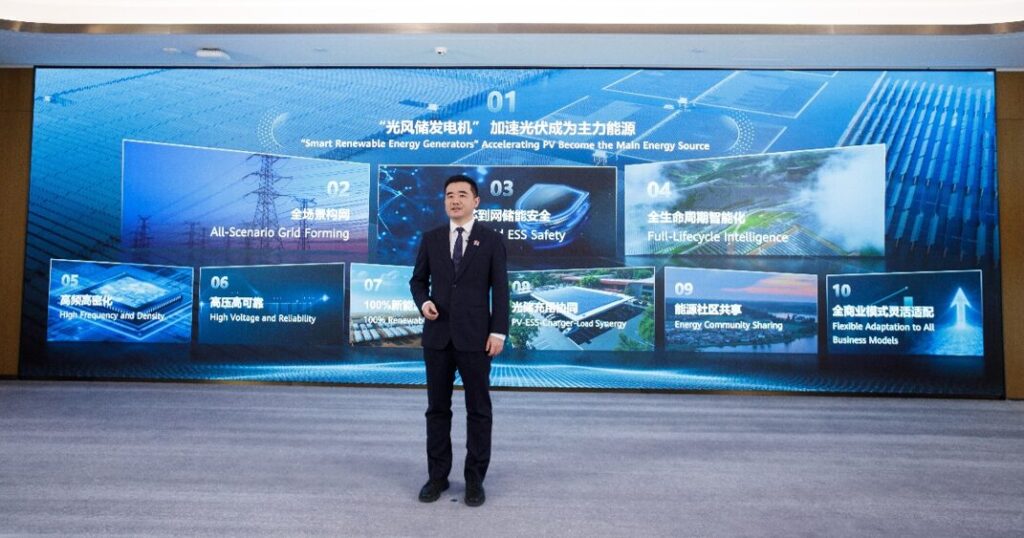
Huawei Digital Power has released its ‘Top 10 Trends of FusionSolar’, along with a white paper, providing forward-looking support for the high-quality development of the PV and energy storage industries.
According to Steven Zhou, president of the smart PV and ESS product lines, renewable energy policies have been favourable in 2024, and the PV and energy storage industries will maintain positive growth in 2025. Amid the global energy transition, the industry is ushering in unprecedented opportunities. As a key contributor to this transition, Huawei Digital Power has predicted the top 10 future trends in industry development, based on its long-term practices and in-depth insights, ranging from core technologies to scenario-based applications.
Trend 1: Renewable energy generators will accelerate PV to become the main energy source
Comprehensive practices for renewable energy generator technology have been completed in terms of theoretical research, product development, demonstration and testing and large-scale applications. This technology is crucial to new power systems, rapidly transforming PV into the main energy source.
Trend 2: All-Scenario Grid Forming
Ubiquitous energy storage and grid forming will ensure the long-term stability of new power systems. As an important power supply that supports the power grid, an energy storage system (ESS) plays a key role in the power generation, transmission, distribution, and consumption of a new power system. The grid-forming ESS implements stable control of the voltage, frequency and power angle, enabling the new power system to run stably over an extended period.
Trend 3: Cell-to-Grid ESS Safety
ESS safety is the foundation. A robust safety protection system will promote the high-quality development of the industry, with a high-standard protection system from battery cells to power grids required to ensure safety. The ESS should guarantee no fire propagation or explosions, as well as automatically isolate power grid faults and recover from these, ensuring safety and reliability throughout the lifecycle.
Trend 4: Full-Lifecycle Intelligence
Renewable power plants will run automatically throughout their lifecycle.
Trend 5: High Frequency and Density
Third-generation semiconductor and digital technologies will increase the power density of power electronic converters and enhance the quality and efficiency of PV+ESS systems.
Trend 6: High Voltage and Reliability
High-voltage application will reduce the LCOE of PV+ESS systems, and a high-reliability design will optimize system availability and safety.
Trend 7: 100% Renewable Microgrid
Economical and stable renewable microgrids will be preferred in areas with electricity shortages.
Trend 8: PV+ESS+Charger+Load Synergy
Power distribution networks will gain higher flexibility, accelerating green power deployment across industries.
Trend 9: Energy Community Sharing
Evolving from self-consumption to community sharing, green power will be better circulated and coordinated among homes.
Trend 10: Flexible Adaptation to All Business Models
Integrated platforms will adapt to diversified business models and create more benefits.
For more details, please download the Whitepaper:
https://solar.huawei.com/download?p=%2f-%2fmedia%2fSolarV4%2fsolar-version2%2fcommon%2fevents-list%2fevents-img%2fpv-trends-2025%2fpdf%2f2025-pv-trends-EN.pdf

